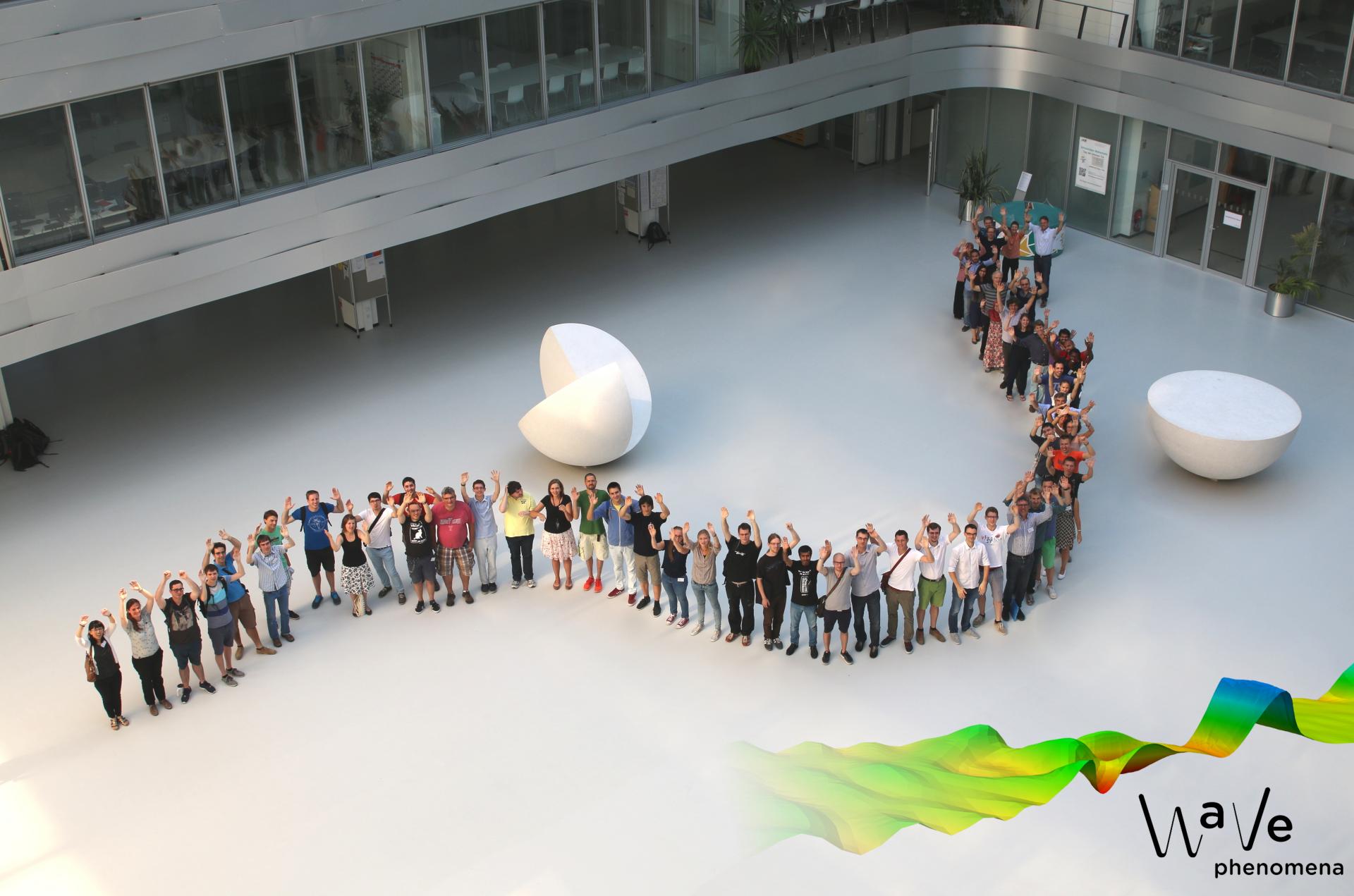 From 12th to 15th of September 2016 the CRC organized its first summer school on wave phenomena. It was directed to Ph.D. and advanced master students with a solid background in analysis and/or numerical analysis of partial differential equations. In the morning from Monday to Thursday two lecture series were held by Herbert Koch (Bonn, Germany) and Alexander Ostermann (Innsbruck, Austria).
From 12th to 15th of September 2016 the CRC organized its first summer school on wave phenomena. It was directed to Ph.D. and advanced master students with a solid background in analysis and/or numerical analysis of partial differential equations. In the morning from Monday to Thursday two lecture series were held by Herbert Koch (Bonn, Germany) and Alexander Ostermann (Innsbruck, Austria).
The lecture series of H. Koch with the title Generalized Korteweg-de Vries and Nonlinear Schrödinger: estimates and dynamics near solitons dealt with analysis, whereas the lecture series of A. Ostermann with the title Splitting methods: analysis and applications had a focus on numerical mathematics. Both series gave an interesting insight into the topics, which we want to recap a bit at this point:
Herbert Koch presented two model problems in his lectures, namely the generalized Korteweg-de Vries (KdV) equation and the one-dimensional nonlinear Schrödinger equation. In the beginning, we received a quick overview on several basic tools and results, such as Strichartz estimates, wellposedness, complete integrability and solitons. The following lectures demonstrated nicely that the above equations have an amazing amount of structure which can be used to gain a better understanding of the stability (or instability) of solitons. First, stability of kink solutions of the modified KdV equation was discussed. Next, the Miura map was introduced, which relates the modified KdV to the KdV equation. In this way, the results for the stability of the kink can also be used in the study of the KdV equation. Finally, the last and most advanced part was concerned with very recent research. A continuous family of conserved quantities was introduced. This family then allows us to show that certain Sobolev norms of solutions stay bounded. Herbert Koch’s vast knowledge made his lectures both impressive and stimulating, further, he left the audience with many questions to think about.
The numerical focus of the summer school was covered by Alexander Ostermann, who talked about operator splitting methods. Those methods can be used to solve differential equations by splitting the equation into several parts, where each part can be solved (hopefully) in an easier way in comparison to the full problem. In order to obtain a good numerical approximation to the exact solution, one iterates the solution of the parts in an appropriate way. Furthermore, his talk gave insight into the error analysis and the application of splitting methods to Korteweg-de Vries, Kadomtsev-Petviashvili, magnetic Schrödinger and Vlasov-type equations. The last part covered order reduction, if we solve initial boundary value problems with splitting methods, and how to obtain the full order by using a modified splitting scheme. Alexander Ostermann’s lecture was very inspiring and made the audience very snoopy about the application of the presented methods to other related problems.
In the afternoon we had the opportunity to work in small groups on selected projects related to the lecture series. The projects were excellent introductions to the respective topics of the lectures with challenging problems which required and therefore in particular supported a deeper understanding of the contents. Thus it was no surprise that the participants of the projects were very involved in the work on the chosen problems. Some people even skipped the coffee break in the afternoon to solve the given tasks and to prepare a good presentation. At the final day of the summer school each group presented the results of their project to the other attendees.
Taking part in this summer school was a great opportunity to meet new people and to listen to really interesting talks. The summer school was closed by the opening event of the CRC, with the conference dinner on September the 15th.
We are proud that we could welcome more than 50 attendees from 12 countries to our summer school.
All in all we really enjoyed the CRC summer school and hope for a nice revival in two years. A big thanks goes to the organizers!